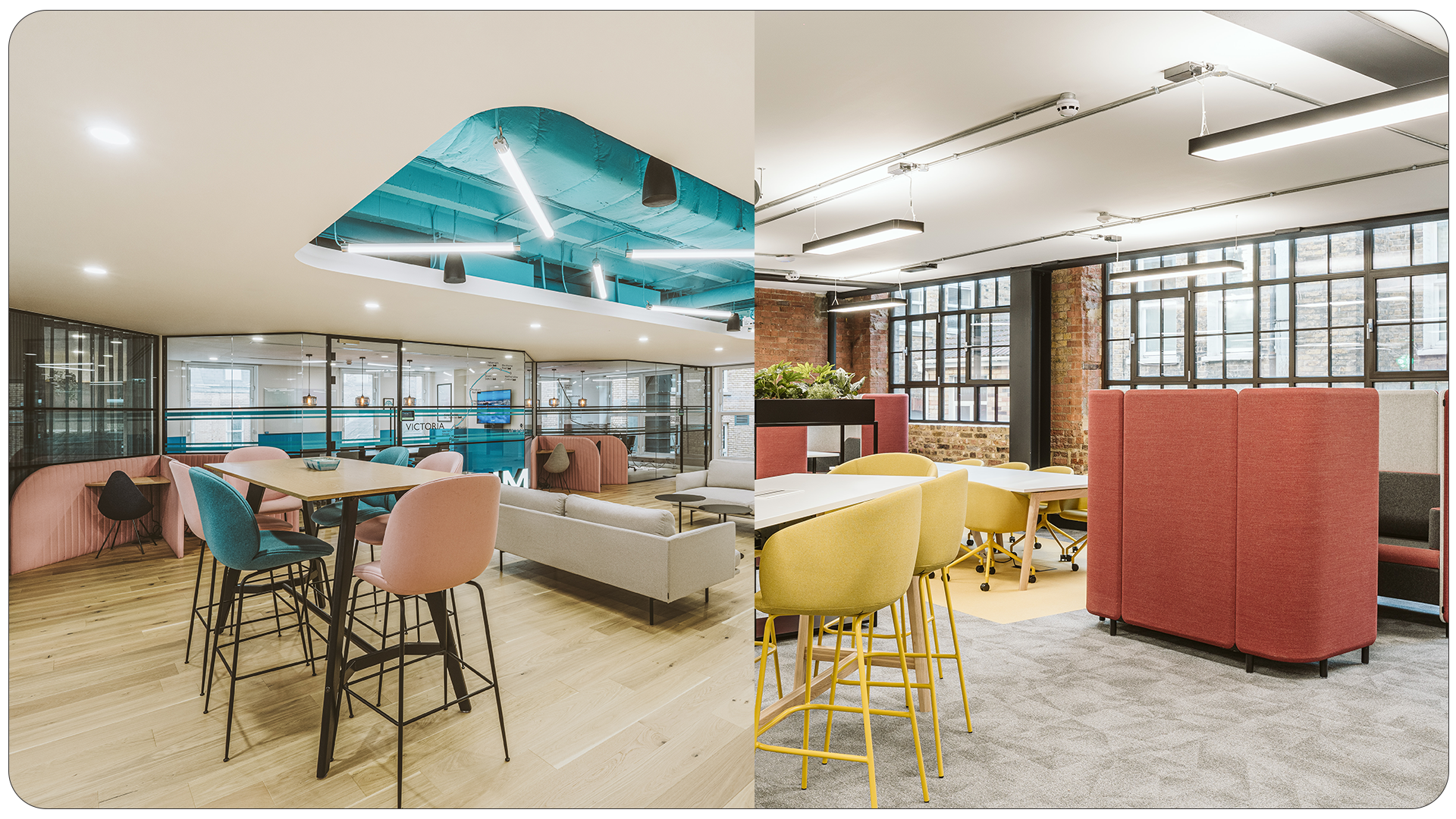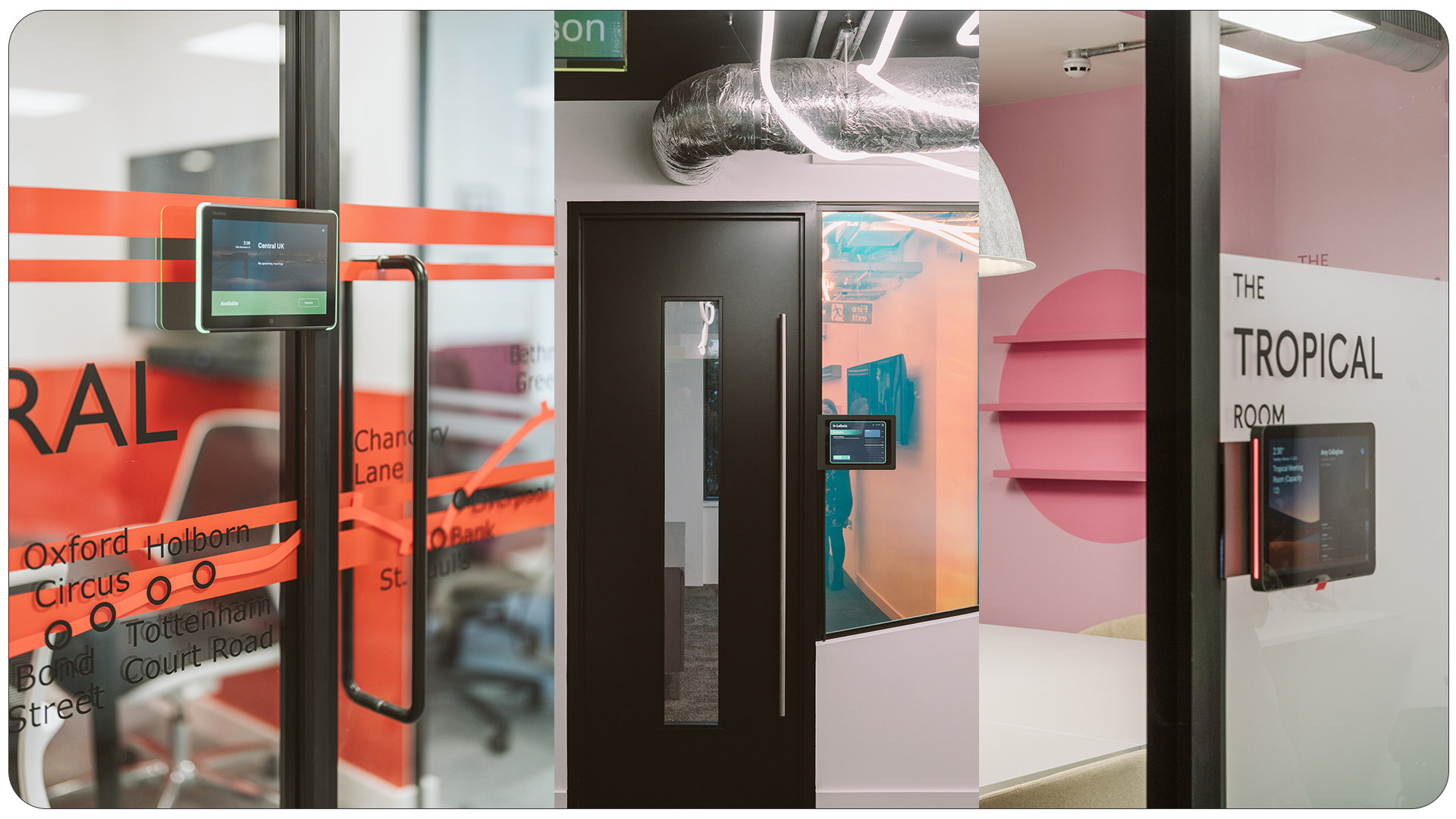Designing Office Space With Soul: Office Design Ideas for 2024
Keeping up to date with the latest office design trends and maintaining a modern office are crucial elements in nurturing a positive work culture. This directly correlates with attracting and retaining top talent while fostering high employee morale, well-being and productivity. To help you stay ahead, we’re sharing some of our top modern office design trends, ensuring you step into 2024 with the best ideas for your workspace.
What should an office look like in 2024?
There is no one-size-fits-all answer for this question, modern office design now is all about innovating but staying grounded and genuine at the same time. It involves the intricate process of incorporating unique and authentic elements that reflect your brand, resonate with your people and align with your values. From the colour palette, art and decor, to the furniture, lighting and finer details like materials and greenery—every aspect plays a pivotal role in shaping a workspace that is both distinctive and purposeful.
To navigate this creative journey effectively, consider asking yourself a series of crucial questions:
- What are the specific requirements of the business?
- What are the needs and preferences of the team?
- What is the allocated budget for the office project?
- How can we translate our values and vision into tangible design elements?
- How creative do we want to be?
While constraints like budget and space are inevitable, ultimately, the key lies in striking the right balance between these considerations. Creating the perfect office space involves making thoughtful decisions that cater to the priorities and constraints unique to your organisation. Below are some of the office design elements that you can take as a foundation for your office design.
Open and Collaborative Spaces:
Modern office designs encourage open and collaborative spaces to foster teamwork and innovation. This involves layouts that remove physical barriers, promoting a sense of shared purpose and easy communication among team members.
With the emergence of hybrid work and the return to office post-pandemic, there is a growing demand for social interaction and collaborative work. In response to this, you need to leverage a combination of spatial design, thoughtful furniture selection and placement, and the incorporation of soft partitions. Our Head of Design, Demet, emphasises, “Clarity should coexist with subtlety. Infuse creativity into crafting these spaces—consider using modular furniture and strategic plant placements to subtly distinguish them as collaborative zones. More importantly, involve the team in the decision-making process; after all, they’ll be the primary occupants of these spaces.”

Bringing Nature into the Office:
Biophilic design principles emphasise incorporating natural elements into the workspace. This can include the strategic placement of plants, natural light optimisation and the use of natural materials. Bringing nature indoors is known to enhance well-being, reduce stress and improve overall employee satisfaction and productivity.
Flexible Workstations: Catering to Modern Ways of Working:
Flexibility in office design accommodates the evolving nature of work. This includes providing a variety of workstations that cater to different tasks and preferences. Adjustable desks, movable partitions and adaptable seating arrangements empower employees to choose the setting that best suits their work requirements, promoting both comfort and efficiency.
In creating a successful and modern work environment, prioritising inclusivity and accessibility is crucial. Be meticulous in your design decisions, ensuring they consider everyone’s needs and backgrounds–aspects like accessible toilets for individuals with disabilities and artwork and colours that resonate with diverse preferences and sensitivities.
Creating a Smart and Connected Workspace:
Technology plays a pivotal role in modern office design. A smart and connected workspace integrates the latest technologies to enhance efficiency and collaboration. This involves incorporating IoT devices, advanced communication tools and automation systems to streamline processes, creating a tech-savvy environment that supports modern work practices.
This year, we introduced advanced meeting room automation technology to a number of our clients, small to medium sized enterprises in particular. After a few months of settling into their new workspace, they’ve experienced a notable enhancement in efficiency and streamlined processes. The technology has greatly contributed to better organisation, making it easier for the team to schedule and gather seamlessly.

Breakout areas are designed to offer employees spaces for relaxation, informal meetings and creative thinking. These areas often feature comfortable furniture, inspiring decor and amenities that encourage socialisation. The aim is to provide a change of scenery from traditional workstations, fostering creativity and collaboration in a more relaxed setting.
We love incorporating local culture and promoting local businesses in our design elements, such as collaborating with local artists, trades and furniture providers. This not only adds a distinctive flair to our projects but also aligns with our sustainability initiatives. By supporting local talent and sourcing materials nearby, we contribute to a reduced carbon footprint, emphasising our commitment to environmentally conscious practices.







